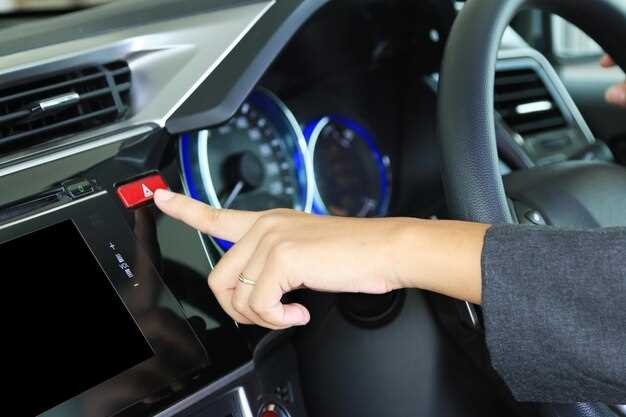
In the realm of high-performance vehicles, luxury exotic cars represent the pinnacle of automotive engineering and design. These sophisticated machines demand a level of care and attention that goes beyond standard maintenance practices. One essential aspect of maintaining these vehicles is the use of On-Board Diagnostics (OBD) scanners, which serve as vital tools for assessing the health and performance of complex automotive systems.
OBD scanners provide a comprehensive means to scan various components within luxury exotic cars, allowing technicians and enthusiasts alike to diagnose issues accurately and efficiently. Unlike conventional vehicles that may utilize simpler diagnostic methods, luxury cars often encompass advanced electronics and intricate control units. An OBD scanner can interface with these systems, providing real-time data and fault codes that are crucial for identifying underlying problems.
Utilizing an OBD scanner goes beyond merely troubleshooting; it enhances the overall driving experience by ensuring optimal performance and reliability. For owners of luxury exotic cars, investing in a high-quality OBD scanning tool can lead to more informed decisions regarding maintenance and upgrades, ultimately preserving the vehicle’s value and driving pleasure.
Choosing the Right OBD Scanner for High-Performance Vehicles

When it comes to high-performance vehicles, selecting the appropriate OBD scanner is crucial for effective diagnostics and maintenance. These vehicles often utilize advanced technology, requiring specialized tools that can handle their intricate systems.
Here are key factors to consider when choosing an OBD scanner for luxury exotic cars:
- Compatibility: Ensure that the scanner is compatible with the specific make and model of your high-performance vehicle. Exotic cars may have unique protocols and data points.
- Functionality: Look for a tool that offers comprehensive diagnostic capabilities, including not only basic trouble code reading but also advanced features like live data streaming and performance monitoring.
- Brand Reputation: Opt for well-known brands that specialize in tools for high-end vehicles. Research reviews and seek recommendations from automotive professionals.
- User Interface: A user-friendly interface is essential for quick and efficient scanning. Choose a scanner with clear menus and easy navigation to save time during diagnostics.
- Update Support: Ensure that the tool receives regular updates to stay compatible with the latest car models and technology. This is especially important as manufacturers release new systems.
- Wireless Connectivity: Consider scanners that offer Bluetooth or Wi-Fi connectivity, allowing for convenient use with mobile devices and laptops.
In summary, selecting a suitable OBD scanner for high-performance vehicles involves examining compatibility, functionality, brand reputation, user interface, update support, and connectivity options. Investing in the right scan tool will ultimately lead to more accurate diagnostics and enhanced vehicle performance.
Understanding Specific Protocols for Exotic Car Diagnostics
Exotic cars often come equipped with advanced technologies and unique features that set them apart from standard vehicles. When utilizing an OBD scan tool for these luxury models, it’s essential to understand the specific diagnostic protocols that govern their systems. Unlike traditional vehicles, exotic cars frequently employ proprietary communication methods that may not be compatible with generic scan tools.
Many high-performance brands utilize their own diagnostic protocols, which can include variations of the On-Board Diagnostics II (OBD-II) standards. Some manufacturers, such as Ferrari or Lamborghini, may implement custom coding schemes that require specialized scan tools to access detailed diagnostic trouble codes (DTCs) and real-time data streams. This means that technicians must be equipped with tools tailored specifically for these vehicles to ensure accurate readings and troubleshooting.
The complexity of exotic car systems also means that comprehensive knowledge of the vehicle’s architecture is necessary. Multi-layered electronic control units (ECUs) manage everything from engine performance to infotainment systems. Thus, a standard OBD-II scan tool may only provide limited access to essential information, resulting in potential misdiagnoses or incomplete assessments.
Furthermore, some luxury vehicles may feature additional protocols such as CAN (Controller Area Network) or LIN (Local Interconnect Network), which further complicate the diagnostic process. Technicians must be adept at interpreting data from these various communication formats to fully understand the car’s performance and health.
To effectively diagnose issues in luxury exotic cars, investing in advanced OBD scan tools that support these specific protocols is crucial. These specialized tools not only allow for thorough diagnostics but also enable technicians to perform programming and coding functions that standard tools cannot offer. As automotive technology continues to evolve, staying updated with the latest advancements in diagnostic tools and protocols is essential for anyone working on exotic cars.
Interpreting Diagnostic Trouble Codes in Luxury Vehicles

Luxury exotic cars often incorporate advanced technology, making the interpretation of Diagnostic Trouble Codes (DTCs) critical for effective vehicle maintenance. When issues arise, a reliable scan tool is essential to retrieve these codes, which provide specific information about system malfunctions.
Luxury vehicles typically use proprietary codes alongside the standard On-Board Diagnostics (OBD-II) codes. Understanding these codes requires familiarity with both general automotive diagnostics and the unique specifications of luxury brands. The following table illustrates common DTCs and their meanings in the context of high-end vehicles:
| Code | Description | Common Issues |
|---|---|---|
| P0300 | Random/Multiple Cylinder Misfire Detected | Ignition system issues, fuel delivery problems |
| P0420 | Catalyst System Efficiency Below Threshold | Faulty catalytic converter, oxygen sensor malfunctions |
| P0700 | Transmission Control System Malfunction | Transmission fluid issues, sensor defects |
| B1000 | Body Control Module (BCM) Failure | Electrical faults, module failure |
Using a scan tool, technicians can quickly diagnose these issues by reading the DTCs stored in the vehicle’s ECU. Once the codes are retrieved, further in-depth analysis may be required to pinpoint the root cause of the problem. For luxury exotic cars, it is crucial to interpret these codes accurately, as improper diagnosis can lead to costly repairs or diminished vehicle performance.
In conclusion, a comprehensive understanding of DTCs and effective use of diagnostic scan tools are vital in maintaining the performance and reliability of luxury vehicles. Recognizing the nuances of each code helps ensure that owners receive the precise care their high-end cars demand.
Real-Time Data Monitoring: Enhancing Performance Analysis
Real-time data monitoring plays a crucial role in the performance analysis of luxury exotic cars. With the use of advanced OBD scanners, drivers and mechanics can easily scan various parameters of a vehicle while it is in operation. This capability allows for immediate feedback on engine performance, fuel efficiency, and overall vehicle health.
OBD scanners serve as a powerful tool that provides insights into metrics such as RPM, throttle position, and coolant temperature. By accessing this data live, car enthusiasts can make informed decisions about adjustments or modifications needed to optimize their vehicle’s performance. For instance, monitoring parameters such as air-fuel ratio and ignition timing in real-time can reveal inefficiencies that may not be apparent through traditional diagnostic methods.
The ability to assess performance in real-time not only enhances the driving experience but also aids in early detection of potential issues. Anomalies can be identified swiftly, allowing for proactive measures that prevent more significant problems down the line. Moreover, luxury exotic cars often feature complex systems that require precise tuning; real-time data provides the necessary feedback for such intricate adjustments.
Utilizing OBD scanners effectively transforms the approach to performance analysis, enabling precision and responsiveness that is vital for high-performance vehicles. As technology continues to evolve, the integration of real-time monitoring will undoubtedly enhance the driving dynamics and longevity of luxury exotic cars.
Handling Advanced Features Unique to Exotic Cars
Exotic cars often come equipped with advanced features that set them apart from standard vehicles. Utilizing an OBD scanner as your diagnostic tool is crucial for effectively managing these unique functionalities. Unlike typical cars, exotic models may incorporate sophisticated systems such as adaptive suspension, multi-mode transmission, and advanced driver assistance features, all of which require specific scanning capabilities.
When scanning an exotic car, understanding the manufacturer-specific codes is essential. Many luxury vehicles utilize proprietary software embedded in their ECUs, which may not be accessible through generic OBD tools. Investing in a high-quality diagnostic scanner designed for luxury brands can significantly enhance your ability to read and clear codes while allowing access to advanced parameter identifications unique to exotic models.
Moreover, some luxury vehicles have integrated performance monitoring systems that provide real-time data on engine performance, tire pressure, and even fuel efficiency. A professional OBD scanner can retrieve this information, providing deeper insights into the vehicle’s health and performance metrics. Properly interpreting this data is key to managing maintenance schedules and ensuring optimal performance.
In addition to standard diagnostic functions, many exotic cars require specialized procedures that your scan tool should support. Features such as electronic parking brake calibration or adaptive headlight adjustments are common in high-end vehicles. Ensuring that your scanner is capable of performing these functions will not only help in routine maintenance but also in high-stakes situations where precise control is critical.
In summary, handling advanced features unique to exotic cars demands the right scanning tools tailored for these high-performance machines. By utilizing a sophisticated OBD scanner, you can unlock the full potential of your vehicle’s advanced systems, ensuring both performance and longevity while maintaining the luxury standards associated with these exceptional cars.
Best Practices for Maintenance and Troubleshooting with OBD Tools
Using OBD scanners effectively requires an understanding of best practices that can enhance maintenance and troubleshooting for luxury exotic cars. Following these guidelines can ensure efficient diagnosis and preventive maintenance.
- Choose the Right Tool: Invest in a high-quality OBD scanner that is compatible with luxury exotic cars. Look for features like live data streaming, freeze frame data, and manufacturer-specific codes.
- Regular Scanning: Incorporate routine scans into your maintenance schedule. This practice helps identify issues before they escalate, ensuring the longevity of the vehicle.
- Understand Diagnostic Codes: Familiarize yourself with the common diagnostic trouble codes (DTCs) associated with your car model. This knowledge aids in quicker troubleshooting.
When issues are detected, follow these troubleshooting steps:
- Note the Codes: Document all scanned codes and their definitions. This record is essential for further analysis and repair decisions.
- Research Manufacturer Recommendations: Consult the manufacturer’s documentation for any specific diagnostic procedures related to the codes obtained during the scan.
- Perform Visual Inspections: Use the scanner’s data alongside physical checks of components affected by the reported issues. Look for signs of wear or damage.
- Clear Codes After Repairs: After addressing the issues, use the OBD tool to clear codes and reset the system. Monitor the vehicle for any reoccurrence of problems.
Lastly, keep your OBD tool updated with the latest software to access new features and improvements. This practice helps maintain compatibility with future models and enhances diagnostic capabilities.
